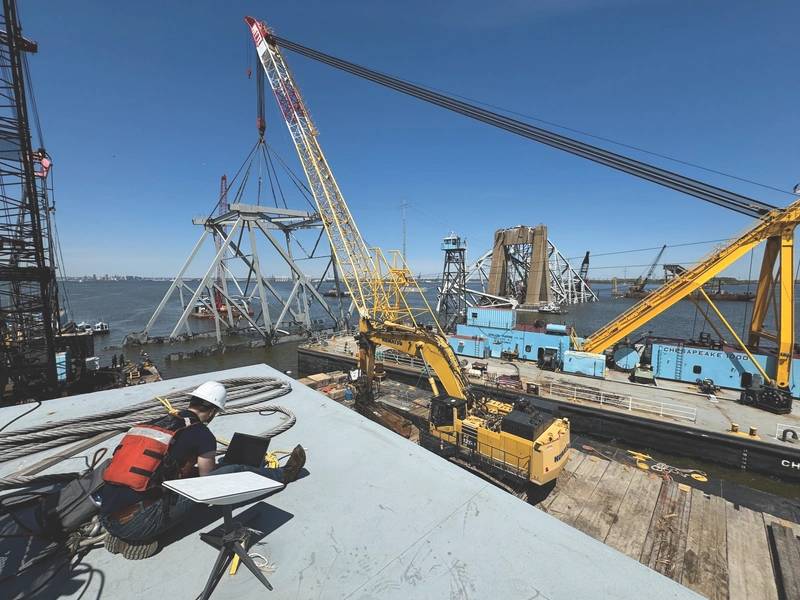The Baltimore Bridge Incident Challenges the Future of Maritime Law
On March 26, 2024, the Dali container ship crashed into Baltimore's Francis Scott Key Bridge, resulting in the loss of six lives. In June, the federal government announced that it had spent approximately $100 million to remove the wreckage and reopen the Fort McHenry Shipping Channel, which had been closed for nearly three months.
In response, the Department of Justice has filed a $100 million lawsuit against the ship's owners, Grace Ocean Private Limited and Synergy Marine Private Limited, accusing them of gross negligence. This horrific incident sparks a broader conversation about accountability in the maritime industry. Regardless of what transpires from the lawsuit, its implications may set a significant precedent for the future.
Allegations of Negligence
The DOJ's complaint outlines serious allegations against the Dali owners. Chetan Patil, acting deputy assistant attorney general of the civil division's torts branch, emphasized that the accident stemmed from careless and grossly negligent decisions. He argued that the owners knowingly sent an unseaworthy vessel into a critical waterway, disregarding the inherent risks to human life and national infrastructure.
Benjamin Mizer, principal deputy associate attorney general, further alleged that the owners cut corners despite being aware of excessive vibrations aboard the ship that could lead to catastrophic failures. The ship reportedly lost power due to tripped circuit breakers in its transformer, a long-standing issue exacerbated by alleged makeshift modifications to the vessel's equipment. Patil indicated that the ship's automation was recklessly disabled, delaying the power supply shift to an alternate transformer. Consequently, the ship could not steer without power, leading directly to the collision with the bridge.
Maritime Law Implications
Criticism of Dali's ownership is loud and vocal. However, the vessel’s owners have relied upon the 1851 Shipowner's Limitation of Liability Act as a protective shield. This law allows shipowners to limit their financial liability for losses and damages incurred during a voyage if they have no privity or knowledge of the negligence that caused the loss. The shipowners file the petition for limitation and claimants then have the burden to prove that an act of negligence or condition of unseaworthiness caused the accident. If the claimant proves this, the shipowner must then prove a lack of privity or knowledge of same.
Lawmakers originally instituted the act to protect shipowners from potential financial ruin due to the high risks of maritime commerce in the 19th century. However, it has increasingly come under scrutiny from a modern lens.
When established, lawmakers intended for the act to encourage maritime trade and protect shipowners against lawsuits arising from accidents at sea, where the owner had little control or knowledge of ongoing conditions. In 1851, unpredictable weather and piracy posed considerable risks, especially without immediate means of communication to the mainland. Legislators at the time feared that excessive litigation could stifle the American shipping industry.
However, as technology and safety standards have evolved, critics argue that the act now shields negligent corporations from accountability more than fosters a fair maritime environment. With modern advancements in communication, navigation, and weather forecasting, many argue that accidents like the one involving the Dali are primarily attributable to gross negligence rather than unavoidable circumstances.
Potential to Break the Limitation of Liability
The DOJ’s claims against the owners of the Dali have the potential to challenge and possibly break the limitation of liability that the shipowners are petitioning for. The burden lies with the DOJ to prove that an act of negligence or condition of unseaworthiness caused the accident. Given the extensive investigation into this incident, they may be able to do so. Legal experts believe that the government's involvement may lend significant weight to breaking the limitation here, as well as future arguments for reforming or even abolishing the Limitation of Liability Act in certain contexts. However, repealing or reforming the Limitation is not without consequences.
Impact on Insurance and Future Practices
A significant consequence of abolishing or reformatting the Limitation of Liability Act would be the impact on insurance policies within the maritime industry. If shipowners cannot limit their liability, insurers would increase premiums to account for this increased exposure. And, as the legal landscape evolves, the potential for increased liability could prompt shipowners to reevaluate their risk management strategies and insurance coverage.
If the act is amended or repealed, it would redefine shipowner liability. The industry may need to adopt stricter safety protocols and improve vessel maintenance standards to mitigate risk. While this could serve as a warning to shipowners to prioritize safety and compliance with regulations, it could also result in shipowners diverting their vessels out of US ports.
The tragic accident involving the Dali container ship could serve as a pivotal moment for liability in maritime law. It presents circumstances that could be used to reshape the industry. While shipowners will hopefully use this as an opportunity to ensure the safety of their vessels, the Act still serves an important purpose in the global shipping industry.
- UPDATE Dali Owner to Pay $102M
On October 25, 2024, the owner and operator of the cargo ship that struck Baltimore’s Francis Scott Key Bridge in March, killing six people, agreed to pay $102M to the federal government. The U.S. Justice Department in September filed a civil claim seeking $103M from Grace Ocean Private Limited and Synergy Marine Private Limited, to recoup the money the U.S. government spent responding to the disaster and clearing the wreck of the Dali ship and bridge debris from the Port of Baltimore so the waterway could reopen in June. The Justice Department’s lawsuit was brought as part of a legal action initiated by Grace Ocean and Synergy to limit their liability for the crash to $44 million, a sum department officials dubbed inadequate.


